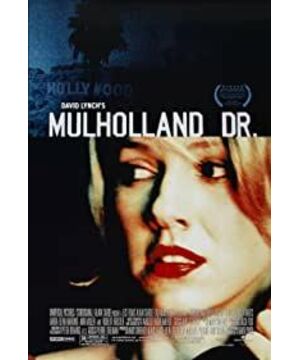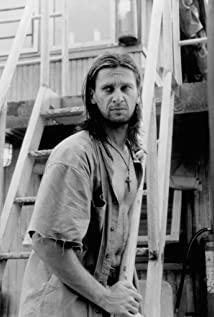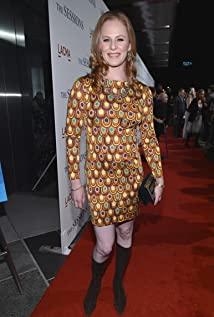——The entrance to Lynchism
David Lynch has become an adjective in film history with just ten feature films and one TV series. If "Kubrick" means a deep gaze, "Takovsky" brings a poetic style, "Fellini" evokes carnival-like fantasy, "Lynciism" explains it It's relatively complicated. On the surface, it is almost synonymous with weird, but the word weird itself has no definition.
Most of Lynch's films can be easily identified from his hands, although he does not appear on the screen as often as Chaplin and Orson Wells. He frequently implanted his personal will into the film to personify it. Like the same person, we can easily recognize it after familiarity, but it is difficult to define it accurately.
Identify Lynch first. Born: The son of a lumberjack in a beautiful town. He has a harmonious family and a happy childhood. He claims to be the "Eagle Scout of Missoula, Montana"; Clothing: Lazy and loose but fasten all the buttons of the white shirt (source of this habit) Because of his fear of exposure); Talking: a way of raising his voice and being surprised, but very gentle; Habits: night owls who are addicted to coffee, eat the same thing every day before getting tired of it, have been continuous At 2:30 in the afternoon of seven years, he appeared at the Bob Hotel in Los Angeles to drink a chocolate milkshake with a silver goblet. Without his iconic weird hairstyle, it is almost impossible to analyze the famous deformity in "Rubber Head" and the ear full of ants that appeared in the grass in "Blue Velvet" from the perspective of understanding the world. What is the origin of the people.
Lynch himself kept secret about the "puzzles" in his films. When asked about the definition of "Lynchism", he replied vaguely: "It means different things to different people," he quoted transcendental meditation. In the words of teacher Charlie Lutz, “Focus on the donut, not on the hole, and concepts like Lynchism are more like that hole. If I start thinking about that hole, it’s dangerous.”
Since the Lumière brothers created the first movie "Train Into the Station"-a fixed shot filmed the process of a train entering the station, the audience panicked when the train was really coming-until now we have relaxed Sitting in the cinema, eating popcorn and wearing 3D glasses, one of the responsibilities of filmmakers is to lead the audience's way of viewing with more pioneering technology and artistic concepts. The "doughnut theory" extracted by Lin Qi and his works is also a revolutionary way of viewing, in which Zen is quite similar to "looking at the mountain is a mountain, looking at the mountain is not a mountain, looking at the mountain is still a mountain."
Film is a complex art, and telling a story is not simple. In the classical context (especially in Hollywood), filmmakers mostly adopt the method of bright gimmicks to help the audience to get into the story more freely. The gimmicks are generally important plots, characters, or influential theories or opinions. For example, Hitchcock, who filmed "The Cry" (also translated "The Mentally Ill") in 1960, is almost the first time someone will Freud moved onto the movie screen, the gimmick appeared straight in the title, and then the audience was pulled in.
Fans who are not familiar with Lynch probably also know "Mulholland Road", a film in which the first three quarters are like dreams and are interpreted as a typical psychoanalytic text. When the film was first released, it was unreadable by Tucao. Fans and the media hoped that Lynch could provide ten clues to the dream. Lynch satisfied them, but the ten clues remained "neutral." Obviously he didn't want to treat the movie as a simple guessing game.
In the future, he talked about "Mulholland Road" again, and the original intention of the creation was glimpsed. The film originally contained only the first three-quarters of the content, but it was rejected as a pilot sample of the TV series. After finally deciding to turn it into a movie, the last quarter of the movie was added, a reality similar to an illusion, everything is reshuffled, and two different time and space are connected through the common face of the actor and become a mirror image of each other. . That is to say, Lynch did not hope to insert a psychoanalytic gimmick in "Mulholland Road" from the beginning, but flipped the TV series that was originally "reality" to create a binary opposition in the same film, perhaps In Lynch's eyes, the last quarter of the film is a painful nightmare. Clues can also be found in the filming techniques. The first three quarters of the film did not use filters, overlays, hand-held, sound processing and other conventional dream-making methods, that is, it does not look like a dream. On the contrary, in the last quarter, two old people who had appeared as passers-by walked out of the secret blue box, small enough to get out of the crack in the door, full of paradoxical surreal atmosphere.
I think Lynch’s original intention is not to throw puzzles, but to bring two opposing worlds to the audience. Good and evil, love and hate, complement each other through the existence of each other, and you can choose what you believe as reality. On the contrary, it is a dream, and even in Lynch’s eyes, there is no gap between the two. Fantasy can invade reality at any time, and reality is also the way to realize fantasy. This great experiment of breaking the glass between dream and reality is exactly what Lynch gave to mainstream movies as a central filmmaker on the fringe. As a viewer of Lynch, the threshold lies only in sensibility—the ability to experience the blurring and fragmentation of light and shadow itself and the separation of reality and dream within 147 minutes.
"Double Peaks" is Lynch's first donut experiment. This TV series began with a simple thought by Lynch and partner Frost: "Let’s make a Dickensian story! A female body washed up by water." This female body named Laura Palma It has become a hole in a donut. I never thought that the puzzle of "Who is the murderer" would enlarge this hole infinitely. At that time, the operating model of TV dramas was similar to that of serialized novels in newspapers, and the time difference between the author and the audience that the story went was only in the production process. Soon after the second season began, because of Lynch’s repeated delays in the ratings of "Twin Peaks", he was told to find the murderer within three days. He expected that "Twin Peaks" would face death at the end of Laura's case-the black hole took almost all of his sight-after revealing the secret, he also left the crew, and "Twin Peaks" was not broadcast soon.
"Two Peaks" is certainly not a detective story, it shows Lynch's true ambition-to create a world of Lynch. Shuangfeng Town is like a place with real events, and its latitude, longitude, and state boundary position are broadcasted from the beginning of the plot. Lynch drew a map of Shuangfeng Town, replaying important locations continuously. He forbids the use of cool-toned props indoors to create a warm sense, while looking for a sense of coldness in the jungle at night. In a small town in the Northwestern United States that retains a little primitive form and is impacted by modern elements, Lynch has transformed every inhabitant into a polyhedron.
Laura is exactly the first vortex that stirred up this great wave. Using the relationship between the two as the basis, it links all people related to her to create a new vortex, and then generate a new linkage, just like a domino, constructing a one. Taiwan's ideal narrative perpetual motion machine, filling the narrative texture is the corner of life that Lynch understands under the grand concept. Like the myth of Nuwa's creation of human beings, his creativity is fully revealed: the tears and laughter, secrets and desires of the residents of Shuangfeng Town, the day and night worlds under absolute good and evil, one holding a log can hear the wood speak A woman who can ring the bell, a one-armed shoemaker who can call the police, a red house where everyone talks upside down, there are many dead people in it, freely traveling through time and space... "Double Peaks" is like a can A doughnut that grows freely in a virtual medium, but the movie is a big machine that is extremely dependent on audiences and capital. The gap between the ideas of the creators at both ends eventually makes the black hole swallow the doughnut, and "Double Peaks" has become an unresolved semi-finished product.
The second half of Lynch’s self-reported statement reveals the higher philosophy of Lynchism—no longer thinking about Lynchism and achieving selflessness. "Think of every movie as the first." Lynch said. This explains the lesser Lynch’s works in his genealogy. "The Elephant Man" puts religious warmth on a deformed child. "Mr. Streit's Story" dissolves the grief of an old man in the last long and bright period. journey of. Not as popular: there were two directors named David Lynch. He once watched the performance of the 78-year-old actor Farnsworth behind the camera, tears bursting into tears, and the other side of the person was always in full bloom.
Stunts, selling points, and preconceived notions—that is, what the audience hopes to get in the movie, such as Lynch fans who must want to see the iconic Lynch style, can be classified as a hole in the doughnut. To cross the threshold of appreciation, the audience needs to realize audio-visual democracy by themselves, and treat every frame they see, every audio track they hear and all the elements that make up them fairly, without being disturbed by the clouds that obscure the essence of the movie. Two of my favorite Lynch moments: In "Twin Peaks", a man and two women sit on the carpet and sing a simple love song. The camera keeps circling between the three, dividing the three in a permutation and combination, single and two. , The panorama, the emotions are permeated and elevated in the music; the heroes and heroines in "My Heart is Wild" finally find rock music in the radio frequency band full of negative news, they jump out of the car and dance in the wilderness like crazy, the camera shakes, Push to the dusk sky. It just so happens that Lynch also compares himself to a radio, and inspiration as life exists in the universe waiting to be grabbed by humans-which happens to be tuned to a wonderful frequency. However, due to the disorder of listening, we see the combination of shots in Lynch’s film that are inconsistent before and after, as well as the same frame of individual elements under a single shot. The writer David Foster Wallace wrote: “A kind of A unique irony, a mixture of creepy and mundane daily life." Tarkovsky said that the essence of film is to carve time, time and space are solidified in the film, and they are constantly reappearing to become eternal moving. Lynch combined all the visual and auditory elements at that moment, and carved them into a medium that Tasman called time—the most basic unit that makes up a doughnut. Each period of time has its own unique life, and any segmentation and redundant interpretation of it will be absorbed by the black hole.
Lynch's quote left a contradiction-geometrically, donuts no longer hold true without holes. This means that the misunderstanding caused by the deviation of the details is a problem that the artwork cannot solve. It also proves that although Lynch claims to treat the completed film like an adult child, the parent’s genes are the child’s background color. , The author's theory is irreplaceable for the value of works.
The author's private creation view will flow beyond the black hole into the doughnut through the form and medium. Lynch gave up the film that had been used for a lifetime in the book "Inland Empire", and boldly switched to shooting with Sony DV. He accepts the characteristics of the new medium's pixels, flicker, and shadows, making the image close to a surreal style-lighter colors, weaker contrast, and its own rough grain-blending seamlessly with the pathologically fragmented plot. At the same time, DV seems more real than film. Its frame rate is higher than that of film and closer to the rate of the human eye. This feeling of plausibility and unreality fascinated Lynch. He used close-up shots at a high frequency, unprecedented in history, to display deformed faces and environments in a new way of viewing, driving a leap in atmosphere. The hole and the donut merge into one at this time, as natural as an oiled paper umbrella in the rain.
Hole is the source of creativity and corresponds to the starting point of artists. Donuts are their bridge to the audience, especially in the general environment of movie, a popular art that depends on the cinema to make a living. Hole, as a transcendent possibility, forms a new duality between the artist and the audience. From another perspective, isn't there a bigger hole outside of the doughnut? This is the location of audiences from different cultural backgrounds all over the world. Greater space means that development potential also indicates unknowable dangers. "Double Peaks" was destroyed by two holes—the audience’s obsession with the “end” and the flaws Lynch exposed at the beginning (a gimmick that is relatively purely visual and life impure)—the inside and the outside combined. "Mulholland Road" is burdened by the swelling of the periphery, burdened with too many philosophical and cryptographic missions, and a lot of investigation and removal work is required to safely reach from one hole to another.
Of course, it is impossible for us to eat the donuts directly, to merge the two holes into one, and fully understand that a piece of art is a fantasy. The ideal situation is probably that the artist and the audience use the donut as a channel, and they communicate with each other spiritually, the audience will be improved in their aesthetics, and the artist will get feedback to inspire their subsequent creation. So far, I seem to have stood on the opposite side of Lynch’s introduction, that is, when we hold a Lynch brand donut, we must find a way to aim our eyes at the black hole and get a glimpse of the so-called "Linchism." The reason is simple: concreteness is not the end. Although the vitality of real artworks will last forever, art still needs to be pushed higher and farther by new artists and artworks, or there is an important thing hidden in Lynchism-anti-Linch Ism.
Bibliography: "David Lynch-He Came from Another World", "Walking with Fire: David Lynch on Movies"
2020.6.2
View more about Mulholland Drive reviews











